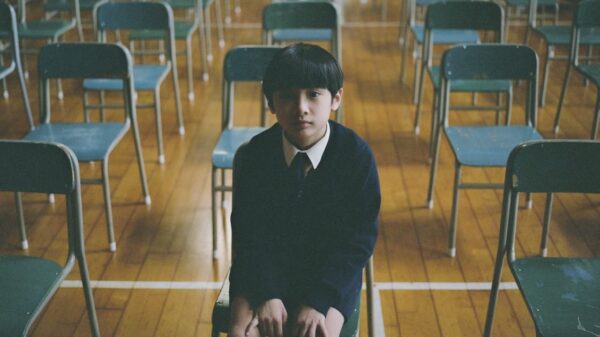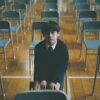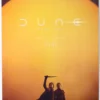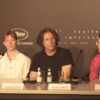Roar writer Samuel Teale Chadwick reviews the ‘Hendrix and Handel’ episode of the Urban Myths series.
As part of their Urban Myths series, Sky Arts showcased the early classical composer George Frideric Handel (David Haig) and virtuoso rock guitarist Jimi Hendrix (Zach Wyatt) who lived in a flat above Handel’s Georgian townhouse by Green Park, now a museum. This coincidence inspired a spoof comedy written by Cara Jennings and Sophie Trott, directed by Justin Chadwick (no relation to author), and produced by John Rushton.Â
It is distinctly not a docu-drama, which is good, because it is not much more accurate than Emily in Paris is of life in Paris. Overall, this very London story is entertaining – albeit not elucidating – television.Â
The year is 1966. This is affirmed by the first song, ‘I Feel Free’ by Cream, the backing track as Jimi and Kathy (his partner) enter her flat. The camera pans up to the window, with a wigged Handel standing behind it. At this point, the year changes to 1743. We hear a generic classical cadence in order to reassure us that the year is indeed 1743.
The to-ing and fro-ing leads to the final scene when eventually, inevitably, the co-lodging geniuses get to meet face to face. A dinner guest of Handel’s, having just drunkenly produced a cartoon of the then prime minister Lord Walpole on the lavatory, remonstrates with Handel: ‘Which is more important – your fortune if nobody comes, or your reputation if they do?’ The composer gets up and leaves.
Meanwhile, Jimi and his girlfriend argue over a drug-fuelled publicity photoshoot which got out of hand. ‘Maybe I should have stayed home playing backup in bars, but I chose the cellophane cage!’ He storms off and lights a cigarette on the dark landing. Handel appears, like a dilapidated Ebenezer Scrooge, wandering around in his nightgown with a candle.Â
They spot and walk towards each other. ‘Handel?’ Hendrix asks. Handel looks up at Hendrix. ‘Jesus?’ he replies. The hallucinating musicians gaze into each other’s eyes. ‘Ya, thank you,’ Handel says, ‘now I know. Be true to yourself and your art.’ The candle goes out; Hendrix rushes upstairs to his guitar and Handel to the harpsichord room.Â
With Handel downstairs and Hendrix upstairs, they play ‘I Know That My Redeemer Liveth’ together, with Jimi’s electric guitar accompanying. When the aria resolves, Handel takes the turn to accompany Hendric, playing the end of ‘Hey Joe’ on harpsichord. It’s a fun and clever end to the episode. The last scene is truly unscripted: it is an archive footage of the London-based Jimi Hendrix Experience at the BBC, a fitting tribute to the first music heard.
In the episode, Handel also straddles a path between inner conviction and public perception. The pious London public is starting to turn against the Messiah, scheduled to be premiered in the secular space of a theatre. For the purposes of the drama, audience members start to return their tickets. The servant, having given Handel a large platter with a single carrot underneath, informs him of this. ‘They say [staging it in a theatre] is blasphemy.’ Handel retorts, ‘How can it be blasphemy when it came to me direct from God? If it was blasphemy, he would give me a sign.’ He bites into the carrot, spits it out, and shouts, ‘The carrot is disgusting!’
Meanwhile, Hendrix wants to buy oranges, bananas and homeware for his new creative pad. ‘Where can we go that’s really funky?’ he asks his girlfriend Kathy. ‘John Lewis,’ she offers. Hendrix, a great listener of classical music, admires an (unfortunately unknown) LP recording of ‘Surely He Hath Bourne Our Griefs,’ a chorus in the second segment of Handel’s magnum opus.Â
Combining history and comedy invites subversion, and the characters are certainly caricatured and necessarily reduced. This show was intentionally irreverent. Nevertheless, if anything does ring true, it’s the closing statement in bright yellow letters: that both musicians ‘stayed true to themselves.’

















